Table of contents
Leek ( Allium ampeloprasum var. porrum ) is a healthy and aromatic vegetable, especially in organic quality. Raw leek stalks are available from local growers almost all year round.
Use in the kitchen
Leek, also called leeks, is popular in the kitchen as a vegetable or seasoning. Its taste is reminiscent of its relatives ( onions , chives and garlic ), but it is milder and does not have a fully formed bulb or tuber. The low-calorie vegetable grows 60-80 cm high, with a distinctive white to light green stem made up of tubular leaves that grow together. 1
What do you eat from leeks? Basically, all parts of the leek are edible. However, the root part is usually omitted when preparing the leek. Some people also discard the green part (= the leaves) when preparing dishes, as they taste a little more bitter/intense, and only use the white stem of the leek.
Can you eat leeks raw? All parts of the plant can be eaten fresh, raw or cooked. The general rule is: the younger the leek, the more tender it is. The older the leek plant, the darker and more fibrous its leaves become. Summer varieties have a milder taste and are therefore particularly suitable for eating raw. Winter leeks, with their fleshier, darker leaves, usually have a stronger and sharper taste and are used as a cooked winter vegetable.
The sulphur compounds contained in leeks give dishes a spicy note. It can be eaten raw in salads and with bread or used as a garnish. This preserves vitamins and other health-promoting ingredients.
The healthy vegetable goes well with vegan soups, stews, colorful vegetable side dishes, casseroles and quiches (also known in Germany as leek cake). If you like it spicy, try a hearty vegan leek omelette instead of muesli for breakfast. In summer, leeks even look good on the grill. As a soup green, leeks are a staple in the kitchen. Together with carrots , bulb fennel and parsley, you can easily make an aromatic instant soup seasoning or seasoning paste from them.
Vegan recipe for leek salad with apple
Ingredients (for 2 people): 1 raw leek (organic), 1 apple , 1 tbsp chopped hazelnuts , 100 g vegan sour cream , 2 tbsp lemon juice , ½ tsp mustard , 1 tsp agave or maple syrup , optionally 1 handful of fresh sprouts (e.g. alfalfa ).
Preparation: Remove the root and wilted leaves from the leek. Wash the apple and leek. To do this, cut the leek lengthways to the middle so that the different layers are well freed of sand and soil after washing. Cut the apple into small cubes and the leek into very fine rings. For the dressing, mix the vegan sour cream, lemon juice, mustard and agave or maple syrup well and season with pepper and salt. In a bowl, mix the dressing with the apple pieces and leek rings. Garnish with chopped hazelnuts and fresh sprouts. Serve the vegan raw vegetable salad with wholemeal bread, for example.
Vegan recipes with leeks can be found under the note: " Recipes that have the most of this ingredient ".
| Not only vegans or vegetarians should read this: Vegans often eat unhealthily. Avoidable nutritional mistakes . |
Shopping - Storage
Leeks are available at supermarket chains such as Coop , Migros , Denner , Volg , Spar , Aldi , Lidl , Rewe , Edeka , Hofer , Billa etc. usually all year round. A well-stocked market offers fresh leeks as individual leek stalks (in various sizes and weights). Sometimes, however, only the white, bleached part of the stalks is cut and packaged in the range. In combination with carrots and celery, leeks are available pre-portioned as soup vegetables. When you buy a leek, you can tell how fresh it is by its firm, deep green leaves without cracks or spots. The middle part of the stalk and the base of the roots should be white. If the leek is pre-cut, pay attention to the freshness of the cut parts. Make sure it is organic and buy fresh leeks in organic supermarkets (e.g. Denn's Biomarkt or Alnatura ), at the weekly market, by buying directly from the farmer or in a subscription box.
The availability of leeks varies depending on the size of the store, catchment area, etc. Our recorded food prices for the DA-CH countries can be found above under the ingredient image - and by clicking you can see their development at different suppliers.
Storage tips
Fresh leeks are stored in the vegetable compartment of the refrigerator. They will keep for about two weeks there. The intense aroma of leeks can change the taste of delicate foods such as fruit or butter. If you have too many fresh leeks, they can be cleaned and pre-cut and frozen and kept in the freezer for up to 12 months.
Ingredients - Nutritional values - Calories
100 g of leek has an energy content of 61 kcal. The main nutrients consist on average of around 0.3 g fat, 1.5 g protein and 14 g carbohydrates. 2 As with any unprocessed food, the nutrient content can vary due to natural fluctuations. (other databases assume an even lower energy value for leeks).
Particularly noteworthy is the vitamin K content (47 µg/100g), folic acid (64 µg/100g) and manganese (0.48 mg/100g). 100 g of fresh leek cover around 63% of the daily requirement of vitamin K , similar to bulb fennel (63 µg/100g) and pak choi (63 µg/100g). Particularly high levels of vitamin K can be found in fresh chard (830 µg/100g) and dandelion (778 µg/100g). 2
The amount of folate (precursor of folic acid, ex vitamin B 9 , B 11 ) in 100 g of raw leek is around 64 µg, which corresponds to 32% of the daily requirement of an adult. Spring onions (64 µg/100g) and raw peas (65 µg/100g) have a similar folate content. Young spinach , which can be eaten raw as a salad, contains more folate. Raw spinach contains 194 µg per 100 g, which covers 97% of the daily requirement. 2
Is leek an important source of vitamin B 6 or vitamin C? Eating 100 g of raw leek covers around a quarter of your daily requirement of vitamin B 6 (0.23 mg/100g) and vitamin C (12 mg/100g). However, the foods richest in vitamin C include raw kale (120 mg/100g) and yellow bell peppers (184 mg/100g). 2 You can read about higher vitamin C levels in organic leeks in the chapter on cultivation and harvest.
You can find the complete ingredients of leek, the coverage of the daily requirement and comparison values with other ingredients in our nutrient tables. In the article Nutrients explained you will get a detailed insight into the topic.
Health effects
Is raw leek healthy? Leeks are rich in health-promoting secondary plant substances such as polyphenols (with their strong antioxidant, heart and vascular protective effects). In addition, the sulfur compounds that are responsible for the aromatic smell and taste of leeks have a strong antibacterial and antifungal effect. 3 The main focus of research is allicin. This is created when leeks and other alliums are cut or damaged from a chemical reaction between the amino acid alliin and the enzyme alliinase. 4 The resulting allicin not only serves plants as a defense mechanism against soil-dwelling pathogens such as fungi and microorganisms. In addition to the effects mentioned, allicin is also said to help against certain viruses and parasites. 5
Allicin is therefore considered a natural antibiotic and is even effective against antibiotic-resistant strains such as Staphylococcus aureus (MRSA). 4 In cancer research, allicin and other ingredients of allium plants are also considered promising in the fight against cancer cells and as a health-promoting preventive measure. 6,7
In addition to its sulphur-containing essential oils, leeks have a particularly high polyphenol content. Strati et al. demonstrated that the phenol content in the green leaves of leeks is higher than in the white parts. 8 Among the polyphenols, leeks contain considerable amounts of the flavonoid kaempferol. It is one of the antioxidants that protect our cells from free radicals (oxidative stress) and has anti-inflammatory properties. 9 Foods rich in kaempferol are associated with a reduction in the risk of developing some types of cancer, 9 including skin, liver and colon cancer. 10 Studies have shown that it significantly inhibits the growth and angiogenesis of cancer cells and induces apoptosis (programmed cell death) of cancer cells. Kaempferol appears to preserve the viability of normal cells and in some cases has a protective effect. 11
Dangers - Intolerances - Side effects
Cases of food allergies to leeks have only been described in isolated cases. Occasionally, inflammation of the nasal mucosa (rhinitis), conjunctivitis or swelling of the eyelids can occur. Cross-reactions with close relatives of leeks (such as onions, garlic, chives) do occur. 12
Like other alliums, leeks can cause flatulence. To avoid this, sensitive people should only eat small amounts of raw leeks, steam them briefly before eating them, or season them with caraway seeds.
Ecological footprint - animal welfare
In 2019, the Institute for Energy and Environmental Research Heidelberg ( ifeu ) examined almost 200 foods in Germany for their environmental impact. The calculation of the ecological CO 2 footprint is based on average values for agricultural production (including all upstream processes, such as fertilizer production), food processing, packaging (including disposal of the same) and distribution to the supermarket. Different cultivation methods (organic - conventional), domestic production vs. import by truck, ship or plane, etc. were also taken into account. For selected foods, the authors also point out the phosphate, water and land consumption. Leeks perform very well with 0.2 kg CO 2 equivalents (CO 2 eq for short) per kg. 13
Another positive aspect for the environmental balance is the possibility of growing leeks outdoors almost all year round. 19 In general, regional and seasonal fruit and vegetables are more climate-friendly than imported goods (the impact of air transport is particularly large), processed foods or vegetables from heated greenhouses. 14 For example, winter tomatoes from greenhouses in Germany have an impact of 2.9 kg CO 2 eq/kg, whereas seasonal, regional tomatoes generate only 0.3 kg CO 2 eq/kg and a much smaller carbon footprint . 13
In conventional agriculture, synthetic pesticides and herbicides are generally used to combat unwanted insects and plants. However, these are often found in the end product, as a study of various types of fruit and vegetables by the Pesticide Action Network Europe shows. Residues of certain pesticides were also found in leeks. 24 Ideally, you should buy leeks from organic farming, as the use of such products is prohibited there. In addition, this method of growing leeks has a better ecological balance: the savings in pesticides reduce emissions. 25
Animal protection - species protection
Although Allium plants are very healthy for humans, they are poisonous for dogs and cats (raw, cooked, dried and in powder form!). 26
Worldwide occurrence - cultivation
According to Vavilov (1926), the primary genetic center of the leek is the Middle East (and the Mediterranean basin), while a more recent study suggests that cultivated forms originate from Asia Minor. 16 Today, Indonesia and Turkey produce the largest quantities of leek worldwide. 18 In addition, it is mainly grown in Western Europe and (to a lesser extent) North America. In Europe, France and Belgium are the main producers. 17
Wildly found
Field leek ( Allium ampeloprasum ), from which the cultivated varieties of leek probably originated, can still be found in the wild in southern Europe, North Africa and the Middle East (native); as well as in North and South America and Australia (introduced). 15
Cultivation - Harvest
In Switzerland, Austria and Germany, leeks are grown both in conventional and organic farming and mostly outdoors. Depending on the growing season, a distinction is made between summer leeks, cultivated in the warm months, and autumn or winter leeks, which still grow even in snow and frost. 19 Due to the large variety of varieties, leeks are suitable for easy cultivation in your own garden almost all year round. They love nutrient-rich, deep soils and are heavy feeders. In order for the plants to develop long, white stems, they need to be covered with soil several times during the growth phase. 1 Direct sowing in the field is possible; for early cultivation, heavy soils and in organic farming (due to weed pressure), pre-cultivation of young plants is more effective. The use of close-meshed crop protection nets is essential, especially in organic farming, to combat well-known pests such as thrips and the leek leaf miner. 19 In your own garden you can experiment with plant manure and mixed culture with odorous plants such as carrots, celery, dill, fennel, chamomile, lavender or parsley.
Leeks have a relatively long cultivation period; depending on the variety and the time of year when they are grown, they can be harvested after five to eight months. 20
If you have planted summer leeks in your own garden, you should dig them up with the roots for storage before the first frosts. In a frost-free cellar or cool, dark storage room, the leeks will stay fresh for a long time in sand boxes. To do this, line the leeks up close to each other and cover the roots well with moist sand ("pack them in"). Since leeks are sensitive to the ripening gas ethylene, you should ensure that you store leeks and fruit separately. 20
Most winter leek varieties are very frost hardy, they can often be left in the field over the winter and harvested fresh until spring as needed. 21
A field study conducted in Russia compared yield, quality and ingredients such as antioxidants between organically and conventionally grown leeks. In addition to major differences between varieties, it was found that the dry matter, sugar content and potassium content are higher in organic farming, while the nitrate concentration increases in conventional farming. The farming method had no influence on the yield, although the trial cultivation was carried out in greenhouses. Among the antioxidants, ascorbic acid (vitamin C) achieved higher values in organically grown leeks. Particularly interesting is the significant positive correlation found between ascorbic acid and polyphenol concentrations in the leek stems. The choice of variety and the cultivation method therefore have an influence on the content of antioxidants, which play an important role in health. 22
Further information
Leek belongs to the genus Allium in the subfamily Allioideae. Several synonyms are used, including Allium porrum 3,17 or Allium ampeloprasum ampeloprasum Porrum Group (or Leek Group).
Alternative names
In Switzerland and now also in large parts of Germany, the term leek is common. In the more rural northwestern and eastern Germany, people have stuck with leeks (from Old French, see also Latin porrum , porrus ). Of the small-scale variants, only the name borage/poretsch has been retained in the Valais. 23 In Austria, depending on the region, the term leek is also common. Leeks are also known as broad leek, winter leek, Welschzwiebel, common leek, Spanish leek, ash leek or meat leek. In English, it is called leek.

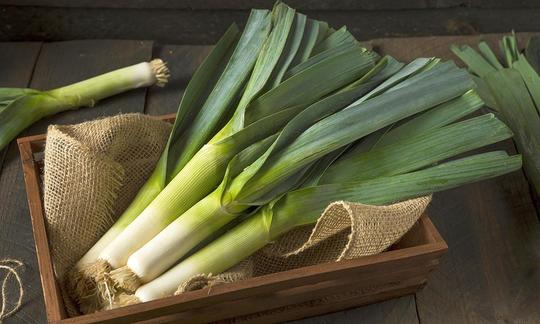

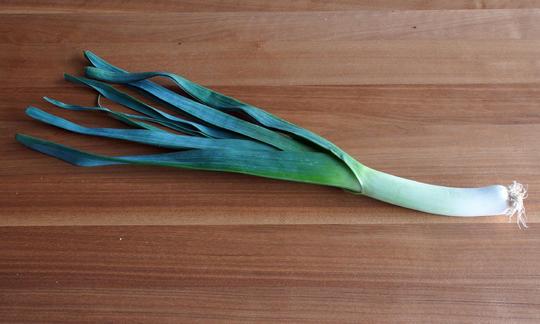

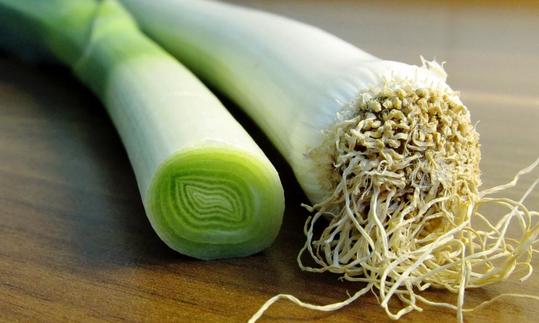

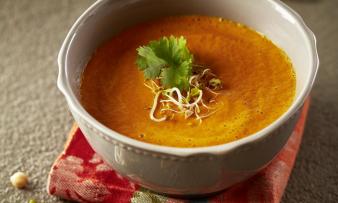
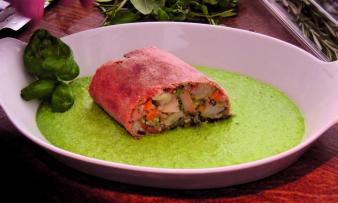
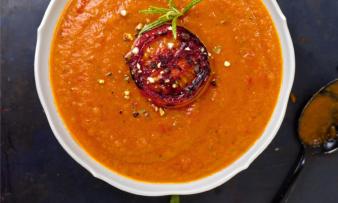





Comments